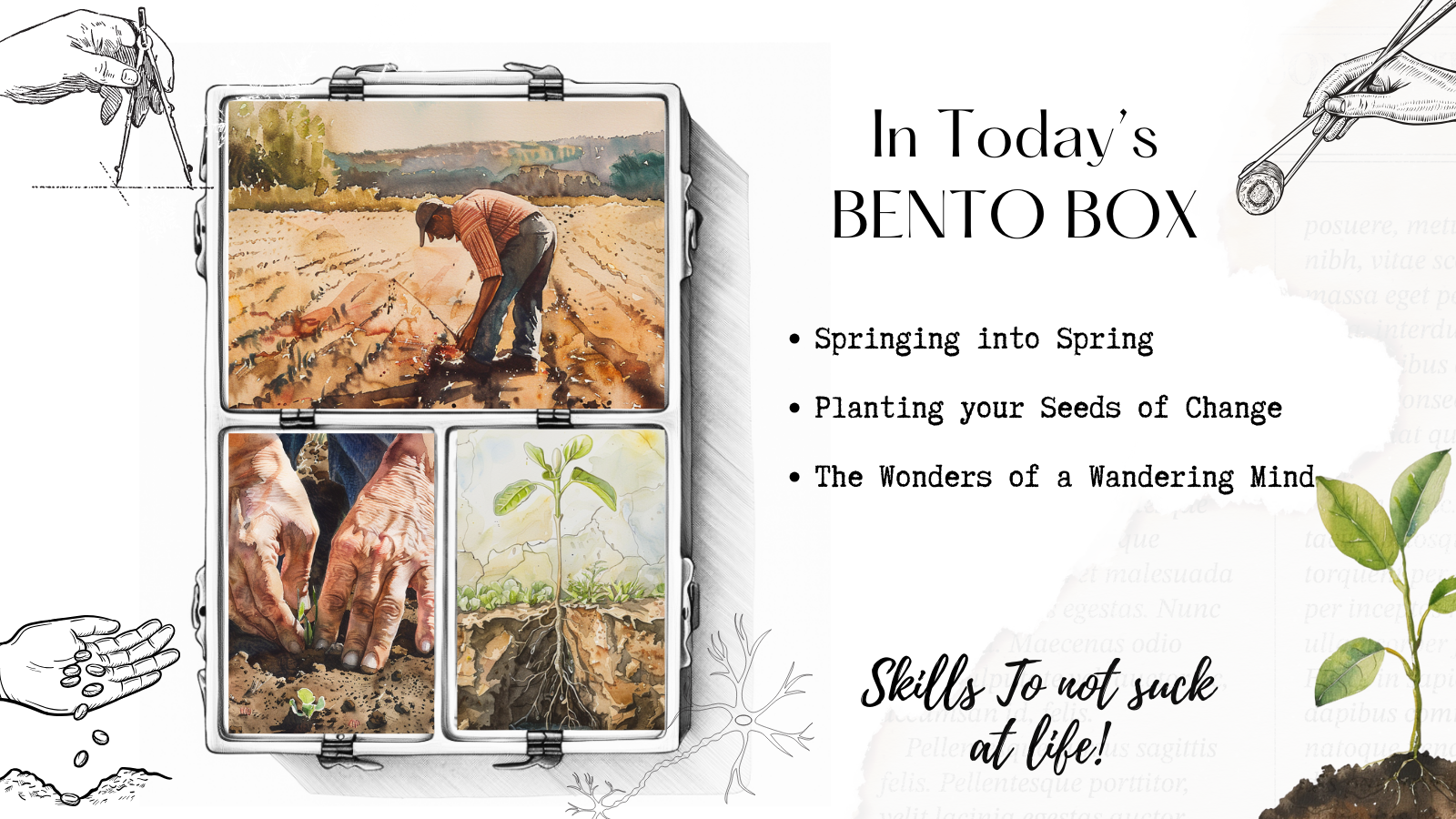Incubation & Doing Less to get more done.
Just because you can’t see it does not mean it’s not happening.
Hello, April! I am so happy you are here.
I may be sleep-deprived (a deadly combination of the clock going forward and staying up late), but something else is also stirring within.
I’d love to be able to name that state, but can’t think of a good label.
So I’ll try to describe it.
Here we go:
It’s a state of calm agitation.
Of potential but inaction.
Of not quite readiness.
Of the unnamed and untamed forces.
Of sensing more than thinking.
Of observing quietly, not adding more to the mix, but rather looking for emerging patterns.
It can be a frustrating time if you don’t let yourself be in it, if you try to rush it and force clarity when there is none yet.
It’s a time when you need to be patient, but patience is at the bottom of your virtue list.
It’s like incubation, where nothing on the surface seems to be happening.
When the daily quota of doing is not really met. When it’s more about being than doing, even though our habit is to always do.
The Power of Subtraction: Finding Clarity in Doing Less
We’re often told that to change our lives, we need to act – bold steps, constant effort, a relentless drive to do more. But what if, sometimes, the most profound change comes from doing less?
Imagine you’re lost in a dense forest.
Every step in a seemingly random direction only leads you deeper into the thicket. Frantically adding more movement isn’t the answer. Instead, you need to pause, observe, and listen. That’s when you might spot a faint trail or the distant sound of a river – guiding clues that emerge in the stillness.
Like navigating that forest, adding more activity and commitments to an already overloaded life can further obscure your path.
True clarity often reveals itself when we subtract the noise. When we create space rather than fill it.
The Benefits of the Wandering Mind
Scientists are discovering what artists have known for ages: that there’s hidden power in those times when our minds drift away from the immediate task.
This “mind wandering” isn’t mere daydreaming.
Our brains are still active, making connections, synthesizing information.
Research suggests that periods of mind wandering, coupled with focused work, can spark creativity and facilitate problem-solving. It’s during these lulls that seemingly disparate ideas can merge, giving rise to breakthroughs.
Or as author Steven Johnson describes it in his book “Where Good Ideas Come From”, allowing for those slow hunches to emerge.”
Incubation: Letting the Subconscious Do The Work
Incubation, a concept familiar to those who study the psychology of thinking, describes the benefits of stepping away from a problem.
Consciously trying to force a solution often blocks it. But when we let go and engage in other activities, our subconscious keeps processing information. Often, the solution “clicks” unexpectedly, as if our minds had an underground team steadily working the puzzle all along.
Incubation isn’t procrastination; it’s a vital part of the creative and problem-solving process.
Moving Too Fast Blurs The Image
I’ve been a photographer for the past 15 years and I know all too well that when the time of exposure is too short and you add movement to it, the image is often blurred, it’s hard to focus on a fast-moving target.
I also know that if you don’t take the time to notice, to really see, you will only capture what’s obvious, what’s on the surface. The same is true in life.
Why We May Fear Stopping
For many of us, the thought of stopping, of subtracting busyness, can be terrifying.
We fear that if we lose momentum, we’ll never get going again. Or worse, that the pause will reveal something we’ve subconsciously been avoiding.
Just look at what happened after the pandemic, when so many of us were forced to stop.
The Great Resignation. The Quiet Quitting. Sabbaticals.
Taking action may lead to new places, but so can stopping.
We may see unfulfilled desires, uncomfortable truths, or feel forced to acknowledge just how far we’ve drifted from our authentic path.
It’s why sabbaticals, while seen as a break, often lead to radical life changes.
There’s a deep shift happening, and during a pause, we finally have the time to acknowledge it, to fully feel it. Our priorities, our desires, they get rewired. Stepping back into our old life might not be a viable – or desired – option after such a break.
The Wisdom of Stillness
It’s easy to get caught in a whirlwind of doing, piling on commitments until our clarity becomes obscured. We may find ourselves pursuing goals that no longer resonate, simply because we’re on autopilot.
Strategic subtraction – whether it’s streamlining our schedules, quieting social distractions, or delegating tasks – allows the waters to settle, revealing our true feelings and needs. It’s a chance to gain the mental space to distinguish what truly matters.
By consciously choosing what to stop doing, what not to give attention to, you gain time to listen to the wisdom within.
Your instincts, your desires, and a clear perception of what truly matters begin to surface.
Sometimes, the bravest action is the stillness that leads to the next, most impactful step.
If you crave change, don’t automatically default to doing more.
Consider the power of intentional subtraction.
Let its stillness guide you toward a life defined by clarity and purpose. Just as the earth needs rest between seasons, so do our minds and souls.
Within the stillness is the potential for growth.


